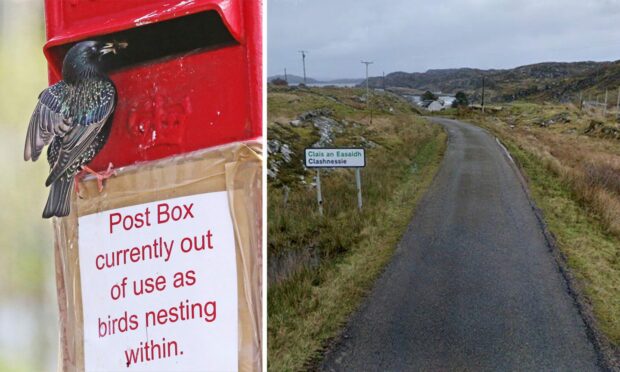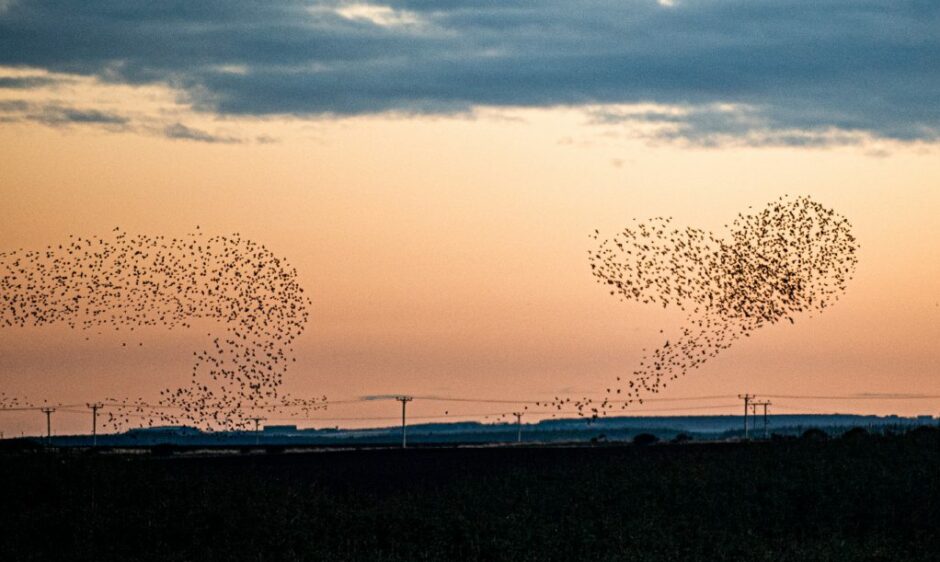A cheeky pair of starlings have set up home in a post box in north-west Sutherland.
The feathered squatters have forced the Royal Mail to declare it officially out of service.
The box, in Clashnessie just north of Lochinver, has been home to the birds for several weeks.
A postal worker made the discovery on their round, and now a notice has been taped to the front of the postbox advising it is currently out of use.
Nearby alternatives are at least three miles away in Balcladdich, Stoer and Drumbeg.
A postal worker said: “We have to wait until the birds have left, and then Royal Mail will come to clean the box and it will go back into service once the wee ones have gone.”
Birds have become ‘local celebrities’
It is the second time starlings have made a home in the Clashnessie postbox, after settling there last year too.
A local woman said that when the starlings first came last year it was during lockdown and there was hardly anyone about in the village.
“It has become quite the local celebrity with lots of people trying to photograph it. Most are unsuccessful though as it comes in and out so fast. It sounds as though there are a few chicks in the box as they are making a right racket, calling out for food,” she said.
Starlings usually nest in loose colonies, settling in holes and cavities – especially trees, but often holes in buildings, including occupied houses.
They usually lay four to six eggs in mid-April, and the chicks hatch about 12 days later.
The young fledge when about three weeks old and are fed for a week or two until they are independent.
In the past, a third of juveniles survived their first year of life, but this has reduced to only 15% according to the RSPB.
Birds which survive to breeding age can expect to live a further two or three years. The oldest known wild individual was 21.
Long-term monitoring by the British Trust for Ornithology (BTO) shows that starling numbers have fallen by 66% since the mid-1970s. Because of this decline in numbers, the starling is red listed as a bird of high conservation concern.
Starlings are perhaps best known for their incredible murmurations – an acrobatic display at around sunset before they roost.

